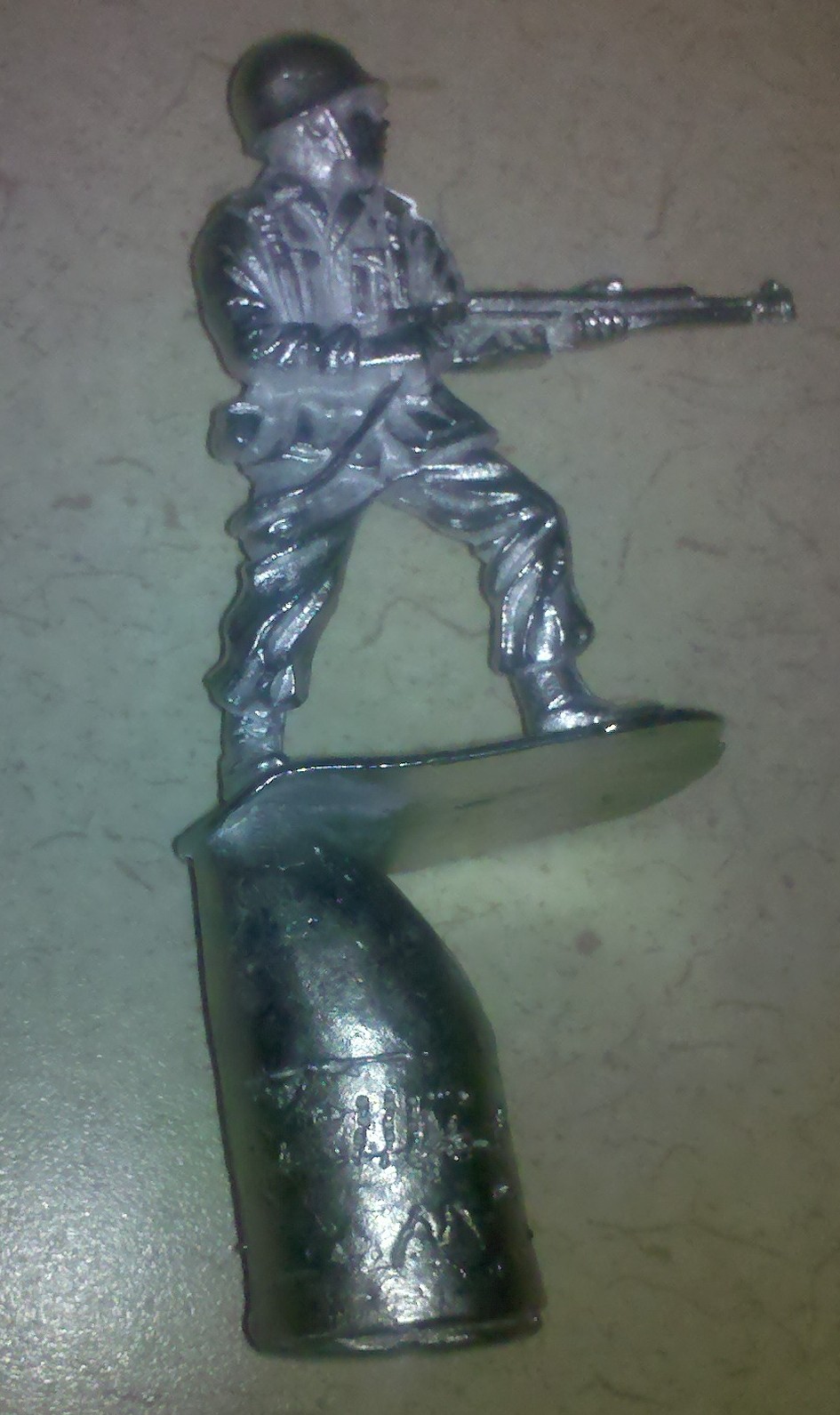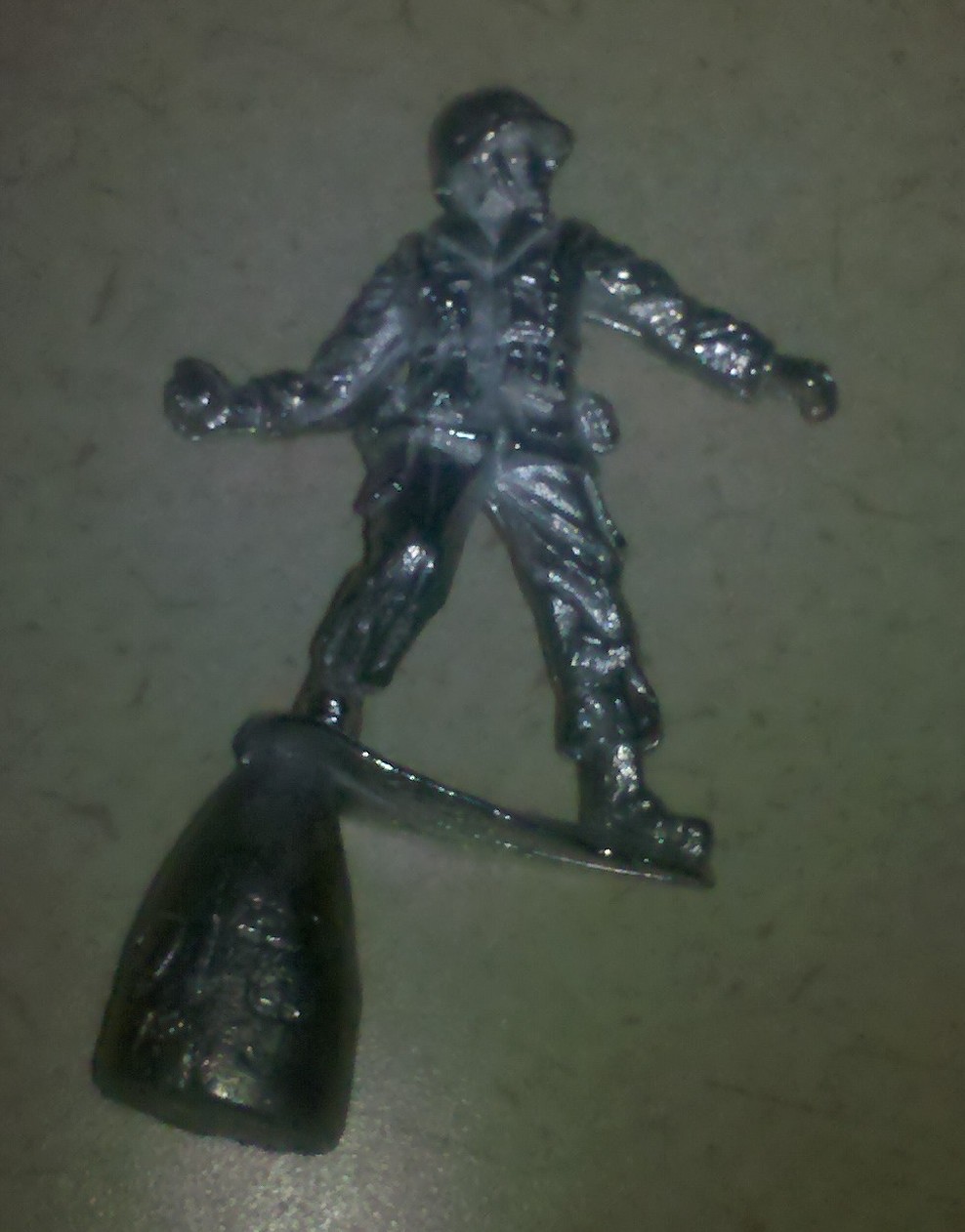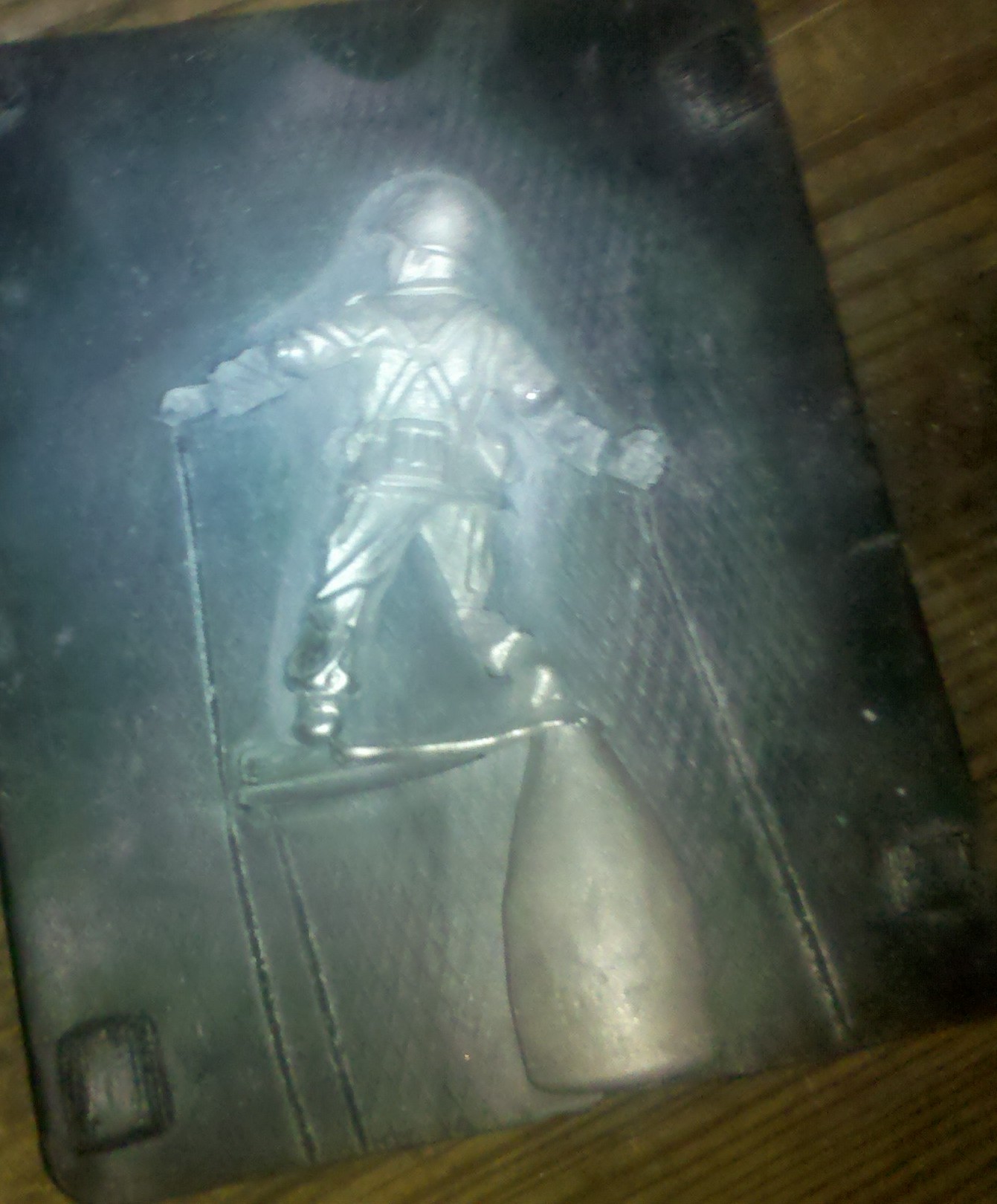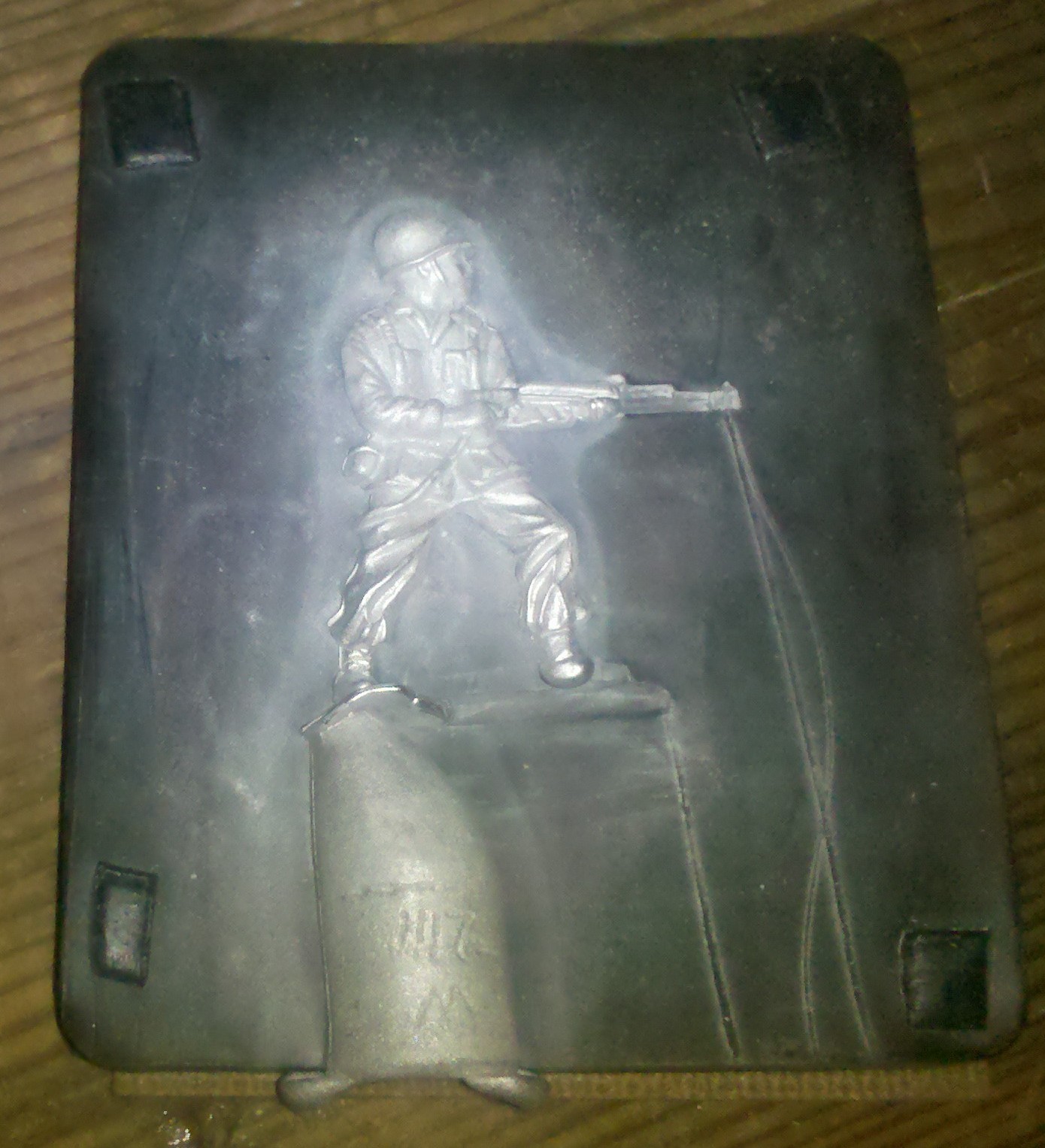Peter Reuss
2nd Lieutenant
- Joined
- Apr 22, 2005
- Messages
- 3,775
We took our son to the Chicago show, and he proudly came home with a Prince August casting kit and a couple Dunkins molds. He's fired up to get casting and painting!
The first figure was cast with success! Now...to paint!
We picked up some acrylics yesterday, along with acrylic primer. He's got brushes...so now he wants help from his dad!
I may be a master at primer , but have no experience in painting. Is there a good resource I can send him to so he can get some tips? Shannon has done some glossy painting in the past, but none of us have done matte (which is what ben wants to do).
, but have no experience in painting. Is there a good resource I can send him to so he can get some tips? Shannon has done some glossy painting in the past, but none of us have done matte (which is what ben wants to do).
Also, what would be a good source for metal? I know you can mail order modeling metal, but it seems that it must be available locally somewhere!
He has the bug! I want to help him have as much success as possible so he'll want to keep with it.
The first figure was cast with success! Now...to paint!
We picked up some acrylics yesterday, along with acrylic primer. He's got brushes...so now he wants help from his dad!
I may be a master at primer
Also, what would be a good source for metal? I know you can mail order modeling metal, but it seems that it must be available locally somewhere!
He has the bug! I want to help him have as much success as possible so he'll want to keep with it.





